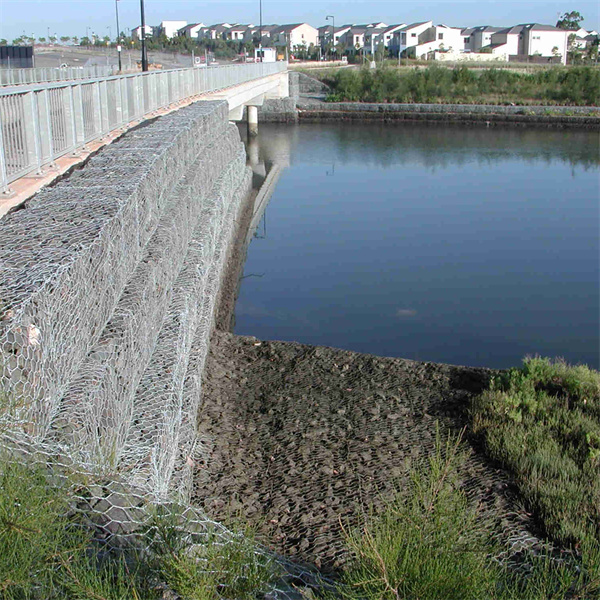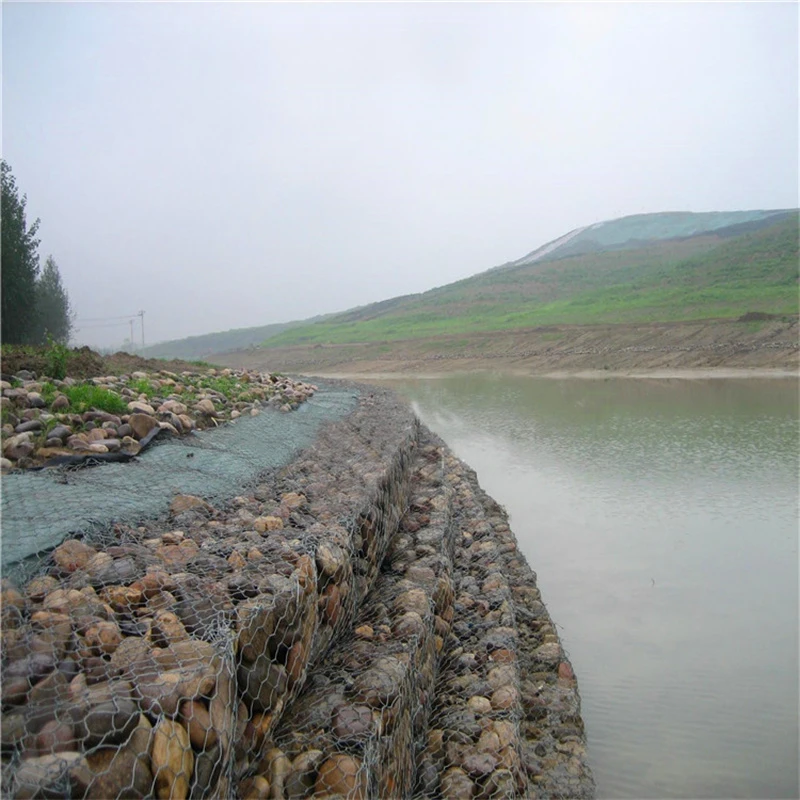Jun . 24, 2025 05:52 Back to list
High-Quality Stone Cage Net - Reliable Suppliers & Leading Factory for Durable Solutions
- Introduction to stone cage net
: Definition, history, and importance in modern engineering - Technical advantages and industry data of stone cage nets
- Comparison of stone cage net suppliers and factories
- Custom stone cage net solutions: meeting project needs
- Application case studies: Successful implementations worldwide
- Sustainability and environmental benefits of stone cage net structures
- Conclusion: Why stone cage net is the optimal choice for your next project

(stone cage net)
Stone Cage Net: Innovating Modern Construction and Civil Engineering
Over the past few decades, the demand for resilient, eco-friendly, and cost-effective structural solutions has increased rapidly in the construction and civil engineering sectors. One such innovation that has stood the test of time is the stone cage net. Also referred to as gabion net or mesh, this robust solution uses galvanized or PVC-coated steel wires carefully interwoven to form a strong mesh, filled with natural stones. Its applications range from retaining walls, river training, road embankments, to landscape enhancements. Stone cage net development dates back to the Roman Empire, but recent technological advancements have elevated its reliability and efficiency, with global utilization expected to reach $2.5 billion by 2025, growing at a CAGR of 7.2% from 2021 (source: industry data reports). The continuously evolving needs of architects and civil engineers for flexible yet reliable containment and erosion control structures underline the significance of stone cage net in modern infrastructure.
Technical Superiority and Industrial Data
The principal advantage of stone cage net systems lies in their versatility, strength, and long-term stability. Manufactured primarily from high-tensile steel wire (with tensile strength ratings between 400-500 MPa), the structure resists deformation and accommodates ground movement without compromising integrity. Modern stone cage nets are galvanized per ASTM A856/A856M-03, with optional PVC coatings for additional corrosion resistance—enabling a service lifespan exceeding 50 years in standard conditions.
Critical technical parameters include:
- Mesh Size: 60x80mm | 80x100mm | 100x120mm
- Wire Diameter: 2.0mm to 4.0mm (core), 3.0mm to 4.5mm (selvedge)
- Coating Thickness: 220g/m²–300g/m² Zn or Zn-Al alloy; 0.5mm PVC/PE coating
Comparative Analysis of Leading Suppliers and Factories
Selecting the best stone cage net for your project involves evaluating multiple stone cage net suppliers and stone cage net factories on parameters such as production scale, technical standards compliance, customization capabilities, and after-sales support. Leading factories are generally ISO 9001 certified, offering automated weaving production lines for consistent product quality. The table below summarizes core data of representative market leaders:
| Factory/Supplier | Annual Output (tons) | Primary Export Markets | Certifications | Customization Capability | Warranty/After-Sales |
|---|---|---|---|---|---|
| Hesly Group | 50,000 | USA, EU, Africa | ISO 9001, SGS, BV | High (CAD/3D support) | Up to 20 years |
| Shanzhi Metal Mesh | 35,000 | Middle East, Southeast Asia | ISO 9001, CE | Medium (Standard & custom sizes) | 10 years |
| Bekaert Fencing Solutions | 45,000 | Global | ISO 9001, ISO 14001 | High (Material variations) | Up to 15 years |
Assessing these suppliers and factories provides a clear lens into which partnerships will ensure product consistency, optimal lead times, and flexible solutions tailored to specific structural or environmental demands.
Custom-Engineered Stone Cage Net Solutions
No two civil engineering challenges are identical, and the efficacy of stone cage net structures often hinges on bespoke customization. Modern stone cage net factories employ 3D modeling and CAD design to create tailor-fit solutions matching terrain, hydrological demands, and loading requirements. Full-service design teams collaborate with clients to specify parameters such as:
- Wall thickness and panel geometry
- Stone size compatibility
- Additional reinforcements (bracing wires, interior diaphragms)
- Special coatings for marine or chemically aggressive environments
Application Case Studies: Global Success Stories
Stone cage net implementation continues to transform landscapes and fortify infrastructure against the impacts of weather and time. The following case studies exemplify the practical impact:
1. Three Gorges Dam, China: Over 300,000 m2 of stone cage nets installed for bank protection and erosion control, reducing maintenance interventions by 60% annually.
2. Frejus Highway, France: Engineered stone cage net retaining walls withstood seismic events up to 6.0 on the Richter scale with zero reported structural failures.
3. Katrina Levee Rehabilitation, USA: Rapid deployment of stone cage nets during the emergency response enabled expedited reopening of vital flood defenses.
4. Residential Riverbank Restoration, Australia: Modular nets enabled environmentally sensitive rehabilitation, resulting in a 35% increase in indigenous flora regrowth after two years.
These real-world deployments demonstrate the adaptability and eco-friendliness of stone cage nets, supporting not only infrastructure longevity but also ecological recovery and community safety.
Sustainability and Environmental Impact
The environmentally conscious design of stone cage net systems has garnered recognition across the civil engineering sector. Unlike monolithic concrete, this solution enables natural water filtration and uninterrupted soil-vegetation cycles. The use of inert, locally sourced stone reduces the embodied carbon footprint historically linked to construction material transportation and production.
According to a study published in the “Journal of Earthworks & Sustainability,” stone cage net wall vegetative integration improves slope stability by over 40%—and after the initial installation, up to 70% of wildlife corridors become re-established within three years. Further, dismantling and recycling of worn nets is straightforward: over 95% of steel and stone—two fully recyclable materials—are efficiently repurposed or integrated back into the environment.
Conclusion: The Future of Stone Cage Net in Infrastructure Engineering
In a rapidly advancing infrastructure context, the stone cage net and its supporting ecosystem—spanning stone cage net suppliers, factories, and advanced custom engineering—represent a proven, technology-driven solution. They offer exceptional versatility, resilience, and environmental stewardship. As governments and project owners continue to face challenges from climate change and urban expansion, selecting the right stone cage net factory ensures optimal performance and reduced lifecycle costs. Industry data and application cases confirm the extensive advantages—making stone cage net the go-to option for durable, adaptive, and sustainable infrastructure worldwide.

(stone cage net)
FAQS on stone cage net
Q: What is a stone cage net?
A: A stone cage net is a wire mesh container filled with stones and used for retaining walls, erosion control, and landscaping. It is also known as a gabion. These nets are durable, flexible, and environmentally friendly.Q: How do I choose reliable stone cage net suppliers?
A: Look for suppliers with proven experience, positive reviews, and product certifications. Reliable stone cage net suppliers often offer customization and technical support. Always request samples and verify delivery times.Q: What types of products do stone cage net factories provide?
A: Stone cage net factories typically produce gabions of various sizes, wire thicknesses, and mesh patterns. They may also offer accessories like clips and installation tools. Custom orders are often available to meet specific project needs.Q: Can a stone cage net factory provide OEM services?
A: Many stone cage net factories offer OEM (Original Equipment Manufacturer) services. This includes designing and manufacturing products to your specifications, including packaging and branding. Contact the factory directly to discuss your requirements.Q: How long does it take for stone cage net suppliers to deliver large orders?
A: Delivery time depends on the order size and supplier's capacity, but typical lead times are 2-4 weeks. Some suppliers offer expedited shipping for urgent projects. Always confirm delivery schedules before placing a large order.-
Visualizing Gabion 3D Integration in Urban Landscapes with Rendering
NewsJul.23,2025
-
The Design and Sustainability of Gabion Wire Mesh Panels
NewsJul.23,2025
-
The Acoustic Performance of Gabion Sound Barriers in Urban Environments
NewsJul.23,2025
-
Mastering the Installation of Galvanized Gabion Structures
NewsJul.23,2025
-
Gabion Boxes: Pioneering Sustainable Infrastructure Across the Globe
NewsJul.23,2025
-
Custom PVC Coated Gabion Boxes for Aesthetic Excellence
NewsJul.23,2025
-
Installation Tips for Gabion Wire Baskets in Erosion Control Projects
NewsJul.21,2025






